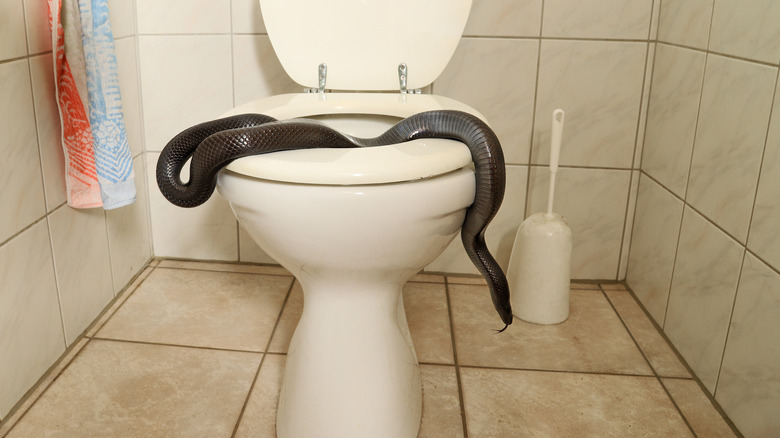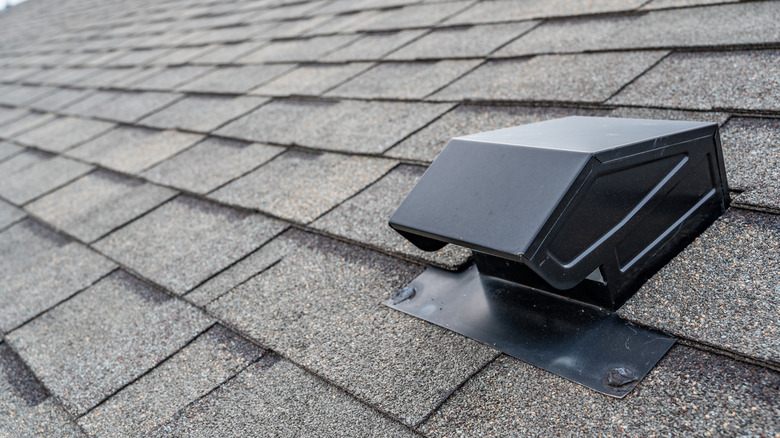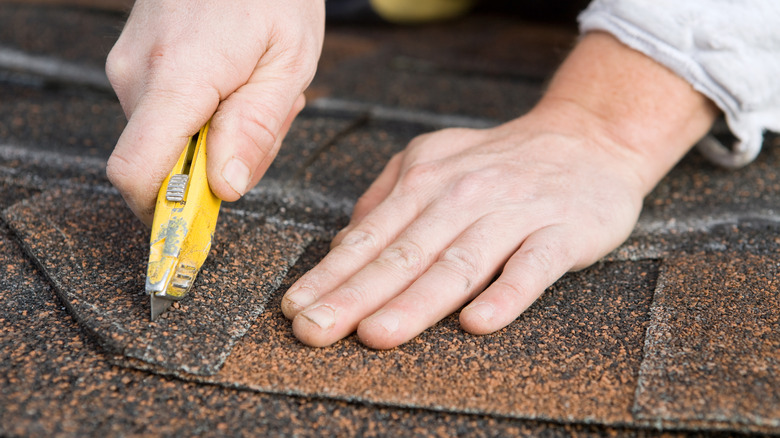Prevent Snakes From Slithering Into Your Toilet With One Simple Trick
The bathroom is often your sanctuary for privacy and relaxation. So, the idea of flipping up the toilet lid and finding a snake staring back at you is, to say the least, a bit jarring. While such occurrences are thankfully rare, they are not impossible. The good news? You can make your home less appealing to these unwelcome visitors, and it's easier than you might think. One potent strategy for home fortification is adding a roof vent hood to your ventilation system. But let's dig a little deeper into why this is so critical. The ventilation system you rely on to maintain clean, fresh air inside your home has a little-known downside: it can be a gateway for small, uninvited guests like snakes or rats. That's right — these creatures can and do navigate complex ventilation networks to enter homes.
You may be scratching your head, thinking, "Why would my ventilation system be inviting to pests?" It's all about accessibility. Ventilation systems usually consist of pipes and ducts open to the external environment. While designed for air circulation, these systems are essentially open pathways leading right into your home. As a result, they inadvertently serve as an all-access pass for small critters that may find the interior of your home as cozy as you do.
Securing your ventilation with a roof vent hood
A roof vent hood perches on top of your home's ventilation pipe, serving a dual role as both a safeguard and a functional component. This vital piece ensures that your ventilation system performs at its peak without inviting any unwelcome guests or debris. Here's where you come in: Choosing the right roof vent hood requires you to meticulously measure your existing ventilation pipes. You must be aware of your ventilation system's diameter, height, and overall size to obtain the optimal fit. Additionally, it is much more than a simple matching game. The fit you choose has a significant impact on the durability and performance of the vent hood itself; it's not just a cosmetic issue.
Equally important are the materials that the hood is made from. Make sure to pick a vent hood constructed from durable materials to stand up against the elements. Look into options like galvanized steel and copper designed to handle high and low temperatures. A good quality vent hood is an investment in your living space's long-term health and comfort. Don't underestimate the tools you'll need for the installation, either. Make a checklist that includes essentials like a wrench for tightening screws, a ladder for safe roof access, and perhaps some sealant to ensure an airtight, weather-resistant seal once the hood is in place. It's also important to wear safety gloves and goggles, as safety should never take a backseat during home improvements.
How to install a roof vent hood
While the task of installing a roof vent hood may seem daunting, with the right tools and some basic know-how, you can complete this project yourself. First, identify where you want the vent hood on your roof. Choose a location that aligns as closely as possible with your indoor exhaust fan. Next, you'll need to make a hole in the roof from the inside, starting with a small hole. Ensure you're properly safeguarded by wearing your safety glasses and gloves.
Start by making a small hole from the inside to use as a guide. Next, go up onto the roof and locate the hole. Once ready, expand the hole to 4 inches using a jigsaw or reciprocating saw. After the hole is cut, measure a square area slightly bigger than the vent flange that will protrude through the roof. You must remove the existing asphalt shingles to clear this square area. A hook blade fitted into a utility knife is the perfect tool. Once done, it's time to prep for sealing. Apply a generous bead of asphalt roof cement to the underside of your vent flange. This will help create a weatherproof seal. Carefully slide the vent flange beneath the shingles that lie directly above the hole, ensuring that these shingles cover the top half of the flange. Now secure the flange by nailing its lower corners into the roof with roofing nails.


